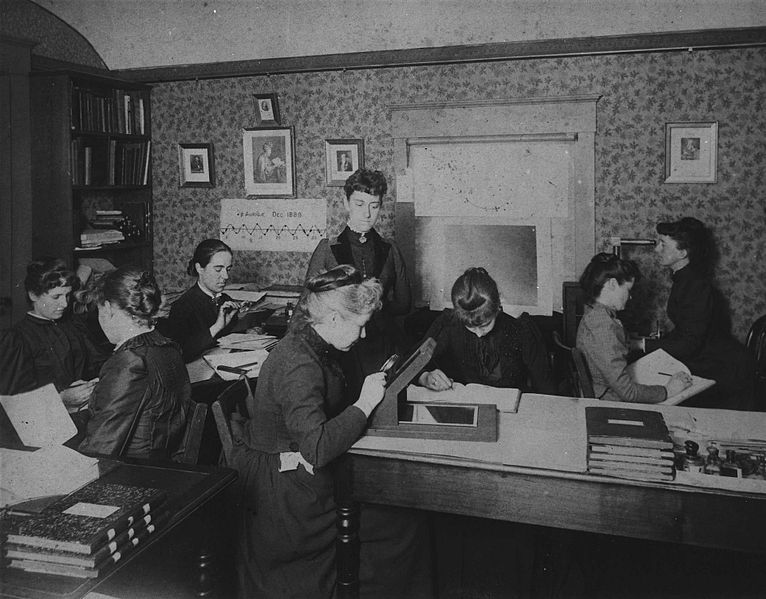Girls and women have made huge impacts in the science of astronomy and space exploration. Today, we continue our “Star Girls” blogs with a look at another of the “Harvard Computers” of the late nineteenth century.
Working alongside Annie Jump Cannon at the Harvard College Observatory was Antonia Maury.

Antonia was born in 1866, in Cold Springs, New York. Her father, Mytton Maury, was an Episcopal minister and amateur naturalist. Her mother, Virginia (Draper) Maury, was the sister of Henry Draper, the first person to photograph stellar spectra. Antonia was also the granddaughter of John Draper, the person credited with producing the first photograph of the moon. As a child, Antoniawas educated at home by her father before attending Vassar College, where her professor, Maria Mitchell, sparked her interest in studying the stars. She graduated in 1887 with honors in physics, philosophy, and astronomy.
While Antonia was not the most famous of the group, authors of a book on the history of the Harvard College Observatory called her “the most original as well as the most elusive personality among the women astronomers at Harvard.” Like Annie, Antonia also used spectroscopy in her work and was given the task of classifying northern stars. She created a system of star classification based on temperature, with divisions to describe the variation in width and definition of the spectral lines. Although she argued that the sharply defined spectral lines of a star “represented a fundamental property of the stars,” Pickering and the other women instead adopted the simpler sorting system invented by Annie, who as I mentioned, received widespread recognition for the work.
Frustrated by Pickering’s preference for Cannon’s system of classification, Antonia left her position at the observatory in 1891. She returned from 1893 to 1894 to continue her work. In 1897, having examined 4,800 photographs, she published her findings on 681 bright northern stars in the Annals of the Harvard College Observatory, making it the first Harvard observatory publication credited to a woman.
